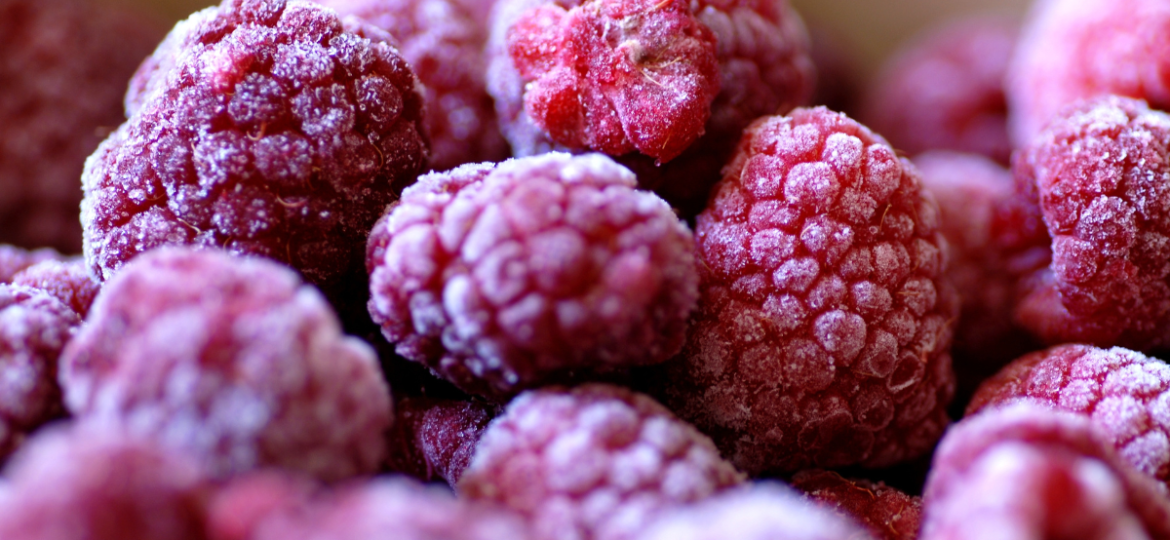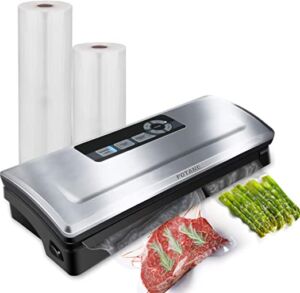
Want to know a not-so-fun fact? According to some sources almost one-third of food purchases go to waste here in the US. That is so crazy to think, especially as the price of food continues to go up. .If you’re a gardener or like us, trying to produce most of your own food, and things are going well, you hopefully will end up with a large amount of produce on your hands from time to time. One of the easiest ways to store you bountiful harvest is to flash freeze it. We use this method mostly for berries, but it works well for sliced peppers, onions and sweet corn.Ok, I hear you. What the hell is the difference between flash freezing and regular freezing and how much is the extra equipment going to cost when I click on your affiliate product link? Most likely you probably have everything you need already.
What Are the Benefits of Flash Freezing
Before we walk you through how to flash freeze food—what are the benefits of flash freezing vs regular freezing?
Flash freezing comes from the restaurant and commercial food industries where blast chillers are used to quickly drop the temperature of food.
Better Texture and Nutrient Preservation
When you freeze food, the moisture content expands and forms crystals. These crystals tend to rupture the cell walls in fruits and vegetables, which is why frozen foods are usually soft or mushy when you defrost them.
Flash freezing usually produces much smaller, fine ice crystals. This equals less mushiness and better food integrity. Because flash freezing causes less cell rupturing, it can also help to maintain the nutrients in certain frozen foodstuffs.
Less Waste, More Convenience
Once you know how to flash freeze food, you can wave goodbye to spoiled fresh produce. Anytime you have excess food that’s suitable for flash freezing, you can save it for future use.
Having flash frozen food on hand can also be super convenient. Did you know that Americans spend almost 400 hours in the kitchen per year? Flash freezing is a great way to food prep ahead of time and streamline meals.
If you follow the right steps, you also won’t have to struggle with big lumps of food that are frozen solid.
Do you enjoy frozen berries? Instead of forming a big solid block and you being all upset about it your berries will be separate frozen pieces of deliciousness..
A More Efficient Use of Your Freezer
Flash freezing isn’t just an efficient use of excess food—it can also help your freezer use less energy. Is your freezer usually only half full?
The more frozen items your freezer holds, the less energy it will need to keep the temp below zero.
Foods You Can Flash Freeze
If you’re doing regenerative gardening, you’re probably eager to know what fresh produce you can preserve by freezing. Some of the best fresh foods include:
- Berries
- Bananas
- Peaches
- Mangos
- Peas
- Corn
- Green beans
- Winter greens
- Carrots
- Broccoli
- Peppers
- Celery
- Herbs
Besides fresh produce, you can also freeze individual portions of meat, such as:
- Steak
- Fajita Meat (Great for Meal Preparation)
- Chicken breasts
- Hamburger patties
- Meatballs
- Tuna Steaks
What You’ll Need to Start
Want to know the best part about flash freezing? You don’t need any fancy equipment.
Commercial flash freezing uses blast chillers, but you can replicate the process at home with a few baking sheets and some freezer space.
Here’s a list of the other items you might need:
- Freezer tape or gummed labels
- Permanent markers
- Freezer bags and containers
- A knife and cutting board
- Wax paper or freezer paper
We’d also recommend you invest in a vacuum sealer. Vacuum sealing is optional, but it can greatly extend the lifespan of your frozen foodstuffs, protect them from freezer burn, and make your frozen portions more compact.
How to Flash Freeze Like a Pro
Starting by cleaning and preparing the food you want to flash freeze. Slice up things like carrots and quarter large fruit like peaches.
Cover a cookie sheet (or other flat tray) with baking paper. Arrange the individual pieces of food, taking care that the sides don’t touch or overlap.
Slide your trays into the freezer and leave them for a couple of hours.
Once your food items are mostly frozen, remove the trays. Portion out the contents into freezer bags or containers.
For things like burgers and steaks, you can separate the individual pieces with baking paper to further prevent them from sticking together.
Squeeze out as much excess air as possible, or, even better—vacuum seal your bags. Label your containers and bags, making sure to include the date. You can also list the number of portions.
Pack back into your freezer, sit back, and enjoy the feeling of accomplishment.
How Long Will My Flash Frozen Food Last
If you’re wondering what the lifespan is on your flash frozen food, here’s a quick rule of thumb. Most foods will remain fresh for up to 3 months after being flash frozen.
Berries and certain fruits can keep for up to a year in the freezer.
Ready, Set, Flash Freeze!
Once you get the hang of it, flash freezing is as easy as 1-2-3. All you need is some freezer space, flat trays, and a few supplies to get started.
Flash freezing can seriously elevate your food storage game by allowing you to freeze portions of food like a professional. No more freezer burn, big lumps of food, or mushy vegetables.


